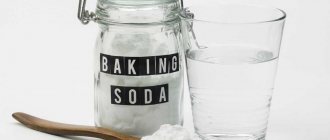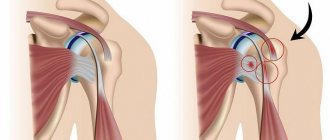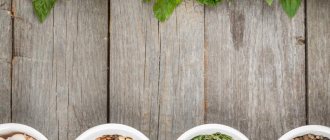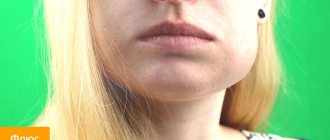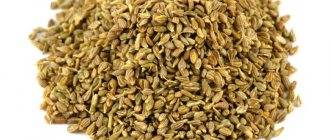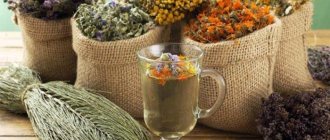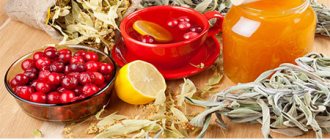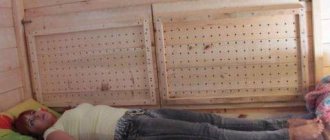Indications for nasal rinsing
A nasal rinse solution is prescribed to those patients who suffer from acute and mild respiratory problems:
- runny nose;
- sinusitis;
- allergic nasal congestion;
- cold.
The solution not only frees the nasal cavity from accumulated mucus, but also helps alleviate irritation of the mucous membranes and has a therapeutic effect for viral diseases.
This product performs 4 actions at once:
- Cleanses the nasal cavity;
- Soothes, reduces inflammation;
- Prevents congestion;
- Fights bacteria and viruses.
Note! Washing at home is prescribed only for non-advanced stages of respiratory problems. If the patient suffers from a severe stage of sinusitis, cleansing the sinuses and nasal cavity can only occur under the supervision of a doctor.
How to prepare a nasal rinse solution at home?
You can buy the most common saline solution at the pharmacy or make it yourself at home.
At home, it is very easy to prepare a solution for rinsing the nose, including for a child.
Dosage of solution for rinsing the nose at home :
How to save money on a hotel?
It is most profitable to search for and book any hotels through Rumguru.
You will see all discounts from all booking systems at once. Save from 20 to 70% of the cost Hotels with discounts
If you are rinsing a child’s nose, then add 1/3 teaspoon of salt to 1 glass of warm (but not hot) boiled water. One third! Not more. For an adult, add half a teaspoon per glass.
The fact is that exactly this proportion is physiological for our body. If you add more salt, you may do more harm than good when rinsing your nose. Since the mucous membrane will quickly dry out, causing discomfort.
It is better to prepare a solution for rinsing the nose before use, although you can store it, but it is better not longer than 1-2 days.
You can also buy ready-made saline solution at the pharmacy. A large bottle of saline solution will cost very little, unlike the promoted aquamaris, aqualors and dolphins.
Why, by the way, shouldn’t you waste thousands of rubles on rinsing solutions? Because they contain ordinary water with salt. Or sea water, which does not change the essence. Although, of course, it’s up to you to pay 500-700 rubles for a bottle or prepare a solution for rinsing your nose at home.
Contraindications
Prolonged rinsing with a saline solution or a liquid with a different composition can adversely affect the patient's health.
In 62% of cases, if a person systematically used rinses for a year and then abruptly abandoned them, the incidence of his illness and the severity of respiratory problems increased sharply. London medical experts came to these conclusions. Therefore, the main taboo when using the solution is long-term use. The course should be limited to 2-3 weeks.
For some patients the procedure is completely contraindicated:
- People with low immunity. When cleansing the nose, the natural composition of the mucous membranes is washed away, which prevents pathogens from entering the body;
- Patients with allergic rhinitis. It is allowed to use the procedure irregularly. However, rinsing should not be used as the main measure to combat allergic rhinitis;
- People with violations of the integrity of tissues in the nasal cavity. If there are abscesses or scratches inside the nose, the solutions will have to be abandoned until these lesions heal;
- For asthmatics. During an incorrect procedure, the composition can enter the lungs and provoke an attack.
Before starting the procedures, it is recommended to contact an ENT specialist to make sure that rinsing is appropriate and there are no contraindications.
How often can you rinse your nose?
In a healthy state, it is recommended to perform nasal hygiene every morning. The procedure helps remove secretions accumulated during the night and frees breathing. Viruses have difficulty taking root on clean mucous membranes, so people who regularly wash their nose are less susceptible to colds.
If you have a runny nose, clean your nose 4 times a day. The first time is in the morning, immediately after waking up. The remaining procedures are carried out during the day, 1.5–2 hours after meals.
In order not to wash away beneficial microflora from the mucous membranes, it is important to use properly prepared solutions.
Nasal rinsing during pregnancy
Pregnant women are more likely to suffer from respiratory problems. This is due to hormonal changes. Against the background of hormonal changes, vasomotor rhinitis occurs - nasal congestion syndrome not associated with the disease. It is typical for the second trimester of pregnancy. Also, during pregnancy, the risk of allergic reactions and colds increases.
A solution for rinsing the nose is easy to prepare at home using clean water, salt and soda.
During pregnancy, you should not use any strong medications without consulting your doctor. However, most nasal rinsing solutions are dietary supplements that do not harm the body of the mother and baby. Therefore, there are no contraindications to rinsing during pregnancy.
Allergic symptoms are best treated with antihistamines. Vasomotor rhinitis is eliminated with the help of herbal and commercial saline solutions and saline. Herbal tinctures can be based on chamomile and thyme. To combat nasal congestion during colds, solutions of sea salt with iodine, saline, and pharmaceutical salt preparations (Dolphin, Marimer) are used.
Should I rinse my nose if I have a runny nose?
When the discharge flows freely and does not stagnate in the sinuses, rinsing is not done. In such cases, it is enough to treat the mucous membrane with a spray or aerosol with an antiviral and antiseptic effect. The product increases the protective functions of the organ and reduces the amount of discharge. If you start rinsing the nasal cavity at this stage, the infection spreads and the disease begins to progress.
Rinsing the nose during a runny nose is indicated if the discharge does not drain well, accumulates in the nasal sinuses, and becomes thick. What solution to use depends on the severity of the disease and the individual characteristics of the body. They use folk remedies and pharmaceuticals. The procedure speeds up recovery and helps avoid complications. Prescribed in parallel with other methods of therapy.
Rinsing the baby's nose
A solution for rinsing the nose can also be prepared for a newborn baby using decoctions of chamomile, sage, and salt solutions at home. When performing procedures, you need to be very careful: the mucous membranes of infants are very sensitive and can be easily damaged. For rinsing, you can use herbal and saline solutions, pharmaceutical preparations such as “Dolphin”.
Full list of acceptable substances:
- sea salt (it is necessary to thoroughly dissolve the grains, pass the solution through gauze to avoid mechanical damage to the nose);
- chamomile decoction;
- sage;
- eucalyptus;
- calendula.
You need to make sure that the baby is not allergic to the substance. To do this, place a couple of drops of the solution on the sensitive skin in the crook of your arm.
How to rinse a baby's nose
Procedure:
- If the child is already holding his head up, to rinse he needs to be seated in a vertical position above the pelvis.
- The baby's head must be slightly tilted and his mouth slightly open to avoid swallowing the composition.
- For rinsing, you can only use a soft rubber syringe or a pharmacy system specially made for infants. First you need to introduce a couple of drops of solution into the nasal cavity and let the child get used to it.
- To prevent damage to the mucous membrane, the tip of the syringe is lubricated with vegetable oil or Vaseline.
- When the child gets used to the composition, it is necessary to increase the pressure on the syringe. The fluid should flow out through the other nostril.
Procedure for very young children:
- If the baby has not yet begun to hold his head up, the procedure is performed on his back.
- First, 7-8 drops from a pipette with a saline or herbal composition are injected into the child’s nasal cavity.
- Then the mucous membrane is carefully washed with a syringe. There should not be a lot of liquid in it: after swallowing a large volume of solution (and this inevitably happens during rinsing), the baby may develop ear disorders.
- After using the syringe, the nose is cleaned with cotton wool flagella up to 5 cm long, while they should sink no more than 2 cm into the nose and be lubricated with Vaseline.
When should you not rinse your child’s nose?
The procedure is contraindicated for a child if he has disorders (cuts) of the upper palate - the so-called “cleft palate”. The procedure for such children is fraught with suffocation.
Also, washing should not be performed on children with problems such as:
- asthma;
- purulent inflammation of the nasal cavity;
- undesirable – for allergic rhinitis;
- It is not recommended at an early age, when the baby cannot yet hold his head up.
Before using the procedure, you should definitely consult with your pediatrician.
Recipe for nasal rinsing from Komarovsky
Dr. Komarovsky is a specialist in pediatric pediatrics. To rinse the baby’s nose, he recommends purchasing the “Salin” product. This is a pharmaceutical drug in a special bottle, it is sprayed like a spray. The advantage of “Salina” is its mild action. In 1 l. water of such a solution contains only 6.5 g of salt, in contrast to saline solution (content per 1 liter - 9 g).
Flushing a child's sinuses
Most parents often wonder: is it possible to rinse their child’s nose at home and how should this be done so as not to harm their child? Of course, it is possible, and even necessary. All doctors advise parents to irrigate the child’s respiratory tract during a cold or for preventive purposes. Before you begin the procedure, you need to know how to rinse your baby’s nose correctly and without harm at home. An infectious disease of the respiratory tract can affect not only adults, but also children, and at any time of the year. The main purpose of this procedure is to cleanse the nose of mucus. The main indication for these measures is the presence of a runny nose. During the course of the disease, doctors advise rinsing the child’s nose before using special sprays. Doctors believe that washing the respiratory tract can improve the health of children with the following diseases:
- headaches;
- fatigue;
- insomnia;
- bronchitis.
Irrigation therapy can be performed even if you have allergies. Rinsing the nose with sea salt can help relieve painful symptoms of allergic reactions in a child. To rinse the nose, you need to prepare the following solution:
- take half a teaspoon of salt;
- dissolve it in water;
- shake well;
- If desired, you can add essential oils.
While standing, you need to rinse the child's nasal passages. Thus, most of the various microbes are washed out of the nasal sinuses, thereby significantly reducing the risk of rhinitis.
How to properly rinse the nose of a child under one year old?
Young children should undergo irrigation therapy as recommended by their pediatrician. Every parent should know how to rinse their child’s nose at home without negative consequences.
Before you start rinsing the baby's nose, you need to remove accumulated mucus from it. To suck out these deposits, you need to use a medical bulb. Children's solutions with salt for rinsing the nasal passages can be found at any pharmacy. To rinse your nose at home, you can also use a homemade salt solution. To do this, you need to pour half a teaspoon of salt into a glass and half a liter of water. The product should be at room temperature. This solution will help neutralize swelling in the nose and fight germs. Consequently, the sinuses at home are cleaned no worse than after a visit to the doctor.
Syringes, syringes and teapots are not used to rinse the nose of infants! You can only rinse your baby’s nose with a pipette, drop no more than 2 drops of the solution into one nostril, and then watch to see that the liquid comes out of the nose.
How to rinse the nose of children over 2 years old?
For children over two years old, rinsing their nose is quite easy. At this age, children themselves already realize the benefits of the procedure offered to them. A child of this age can be given a saline solution and a drop of iodine added to it. You can rinse your baby's nose using a syringe or syringe. The mechanism for carrying out such an event is no different from the procedure for rinsing the nose of infants. Children over 7 years old can use special teapots for rinsing the nose, as well as use the two advanced methods described above.
Nasal rinsing: how and with what
Homemade nasal rinses vary depending on the type of respiratory problem. The concentration of salt varies, as well as the type of liquid - it can be herbal, salt, iodine.
With a runny nose
For a runny nose caused by a chronic disorder, it is recommended to use one of the pharmaceutical preparations for rinsing (the full list is presented below). Antiseptic agents are already added to them, thanks to which the solution not only cleanses the nose, but also disinfects it.
To prevent further congestion, it is recommended to use formulations with menthol and eucalyptus. There are sprays with such additives. You can prepare the composition at home using eucalyptus tincture (concentration - 2-3 drops per syringe). The frequency of washing is 2-3 times a day.
For sinusitis
Sinusitis requires special caution: it is not recommended to use herbal infusions, as they can increase inflammation. For cleansing, saline solution and saline preparations are used. The frequency of rinsing should be prescribed by the attending physician.
For a cold
Colds must be eliminated with antiseptic solutions. Salt disinfects, but not enough. If the solution is prepared at home, you need to add 1-2 drops of iodine to give a disinfecting effect.
You should pay attention to tinctures of sage and calendula. They produce a therapeutic effect. For colds, rinsing should be limited to 2 times a day. Otherwise, irritation of the skin around the nose may develop.
For congestion
Nasal congestion can occur with vasomotor (hormonal) rhinitis or allergies. In the first case, the use of the solution is justified, but in the second it is not required. Allergic rhinitis goes away on its own within half an hour.
The following formulations are suitable:
- salt;
- saline;
- based on chamomile.
Washing is carried out as needed. If the problem does not resolve within 2 days, you need to contact an ENT specialist.
What should I use to rinse my nose?
There are many different remedies that you can use to rinse your nose with a runny nose at home. You can buy them or prepare them at home.
Pharmacy drugs
The treatment regimen should be selected by an ENT specialist. After all, it is impossible to independently determine the cause of an unpleasant symptom. It is advisable to use anti-inflammatory or antiseptic drugs when inflammation develops. And in case of allergic rhinitis, drying of the mucous membrane, their use is pointless.
But you can choose some remedies yourself. For example, preparations with sea water. They can be of two types. Physiological solutions with a salt concentration of 0.9%, which corresponds to the normal salinity of human blood. They moisturize the mucous membranes well, restoring and strengthening them, and help with allergic rhinitis.
Hypertonic formulations are more saturated with salt, therefore they destroy harmful microorganisms. They reduce tissue swelling and accelerate mucus removal. But with prolonged use of such drugs, the mucous membrane dries out, so it is not recommended to use them for longer than 30 days.
You can buy saline solution at the pharmacy. This substance is inexpensive, safe, does not irritate tissue, and can be instilled into the eyes. The use of saline solution is suitable even for infants. It destroys pathogenic microflora from the nasal mucosa, under its influence the mucus becomes more watery, and swelling of the walls decreases.
Let's consider what else to rinse your nose with to eliminate a runny nose and other symptoms:
- Humer. Contains diluted sea water. The Baby Humer is suitable for babies one month old and older. The bottle is equipped with a special dispenser, which ensures safe administration of the medication. The Humer for adults has a larger nozzle.
- Aqualor. Also contains ocean water. Available in several forms. Aqualor baby is intended for babies from the first days of life. Aqualor Soft is suitable for allergy sufferers and people with dry nasal mucosa.
- Aqua Maris. Available in the form of spray and drops. For children under one year of age, the use of drops is allowed. Aqua Maris Plus, in addition to diluted ocean water, contains dexpanthenol, which has a regenerating effect. This drug effectively helps with sinusitis and atrophic rhinitis. Aqua Maris Sense contains ectoine, which protects cells from destruction. Suitable for relieving symptoms of allergic rhinitis. The drug is safe, so it can be used for long courses.
There are other pharmaceutical products, the main element of which is sea water. Before using them, you must read the instructions on the packaging.
Bactericidal and antimicrobial agents
You can also purchase drugs with antimicrobial and bactericidal effects:
- Furacilin. The active element is nitrofural, which prevents microbial cells from multiplying. It is necessary to use a weak solution (0.2%). Half the tablet must be crushed and filled with 100 ml of hot water. It is recommended to use the prepared composition immediately.
- Dioxidine. It is prescribed for sinusitis of various etiologies. A 1% solution is used (when purchasing the product, you need to pay attention to the concentration, as there are even more diluted solutions). Before washing, you need to check the tolerability of the drug and administer a test dose of 10 ml.
- Hydrogen peroxide. This is an antiseptic drug that destroys germs and removes accumulated mucus. Rinse your nose with a 3% peroxide solution diluted with an equal amount of purified water (can be diluted with saline solution).
- Miramistin. It has a dispenser that facilitates the process of rinsing the nose. The concentration of the product should be 0.01%. It is odorless and tasteless, does not cause burning, so the procedure does not cause discomfort.
- Protargol. This is a concentrated product containing silver ions. The liquid is prescribed for the treatment of acute rhinitis. To rinse, add 3-4 drops per glass of water.
- Chlorhexidine. It is a cheaper analogue of Miramistin. Kills microbes, has a gentle effect on mucous membranes, and is safe. A 0.05% solution is used for washing.
Making saline solution at home
A nasal rinse solution is easiest to prepare at home. Homemade liquids allow you to save money and time by avoiding a trip to the pharmacy.
From table salt
Table salt dissolves easily, but is not considered effective for rinsing the nose. It is better to supplement it with soda (see below). However, if the patient wants a mild solution that does not cause a burning sensation, this is the best option. A third of a teaspoon of salt is diluted in boiled water at room temperature (one glass).
From sea salt
The recipe and preparation proportions are the same as with table salt. But you need to add the solution and strain it through cheesecloth so that no large particles of salt remain in the liquid. If you carefully place the sea salt in warm water, you can avoid straining through cheesecloth.
From salt and soda
1 teaspoon of table salt and 1 spoon of soda are diluted in warm water. If the composition is prepared for a child, the concentration should be reduced to a third of a teaspoon for both substances. Soda and salt are diluted in one glass of water (250-300 ml).
From salt with iodine
A solution of salt with iodine has the best antiseptic properties. To make the rinsing disinfectant, add 10 drops of iodine to the salt solution (from 1/3 to 1 tsp per 250 ml). The solution must be thoroughly stirred until a uniform color is obtained.
Rinse the nose with Furacilin solution
Furacilin is administered into the nose using a syringe. For one wash, 5 ml of solution is enough. The substance is used 2-3 times a day for sinusitis.
Rinse the nose with herbal solutions
For preparation, you should use bactericidal and medicinal herbs:
- sage;
- chamomile;
- eucalyptus;
- calendula.
A decoction is prepared from the petals of the plant. A concentrated decoction can be diluted in water, but a liquid decoction does not require dilution. It is convenient to inject the liquid into the nasal cavity using a syringe. It is suitable for patients with irritation of the mucous membranes, but will have a negative effect on the condition of allergy sufferers.
Rinse the nose with saline solution
Saline solution is recommended for patients with impaired structure of protective cilia. It can be purchased separately or as part of pharmaceutical preparations for rinsing the nose. Saline solution (9%) can be drawn from a bottle with a rubber cap using a syringe, then remove the needle and inject the composition into the nose.
Rinsing the nose with beet juice and honey
From beet juice and liquid honey you can prepare a liquid to restore and cleanse the nose. It helps relieve inflammation, does not irritate the skin, but does not have bactericidal properties.
Adults can rinse their nose with 3-4 drops of pure beet juice. For children, prepare a solution of water and juice in a 1:1 ratio. Honey can be added to soften the mucous membrane: half a teaspoon of liquid composition per 250 ml of water. Rinsing is carried out in the standard way using a syringe or syringe.
Wash solutions
In medical institutions, solutions with an antibiotic or antiseptic are usually used for irrigation. At home, you can use herbal infusions, water with added sea or regular salt, mineral or plain boiled water.
Decoctions and infusions of herbs
Treatment with decoctions and infusions of herbs came to us from time immemorial. Chamomile, calendula, St. John's wort, calendula contain natural antiseptics that help cope with the disease. A decoction of oak bark also has an astringent property, but it must be used diluted so as not to damage the mucous membrane.
The recipe for making an infusion usually goes like this: pour 1 tablespoon of herbs (flowers) with 1 glass of boiling water, cover and leave until cool. When preparing decoctions, the proportions are the same, but the mixture must be cooked in a water bath for 20-40 minutes, depending on the components.
After preparation, the infusion or decoction must be carefully strained.
Saline solutions
You can make a saline solution at home or buy it ready-made. The line of ready-made pharmaceutical preparations is quite wide: Aqua Maris, Humer, Salin, Aqualor, Marimer. Manufacturers also offer sachets of sea salt, sometimes with the addition of herbs. The bag is dissolved in a certain amount of boiled water.
You can prepare the solution yourself using sea salt or rock salt. The proportion is selected experimentally depending on the condition of the mucosa. Usually they start from the ratio of 1 teaspoon of salt per glass of boiled water.
We recommend reading: Nasal polyps: signs, complications, diagnosis and treatment methods
Antiseptics and antibiotics
Antimicrobial agents, as a rule, are used only within the walls of a clinic or hospital. Uncontrolled use can lead to the development of microbial resistance to antibiotics or antiseptics.
Otolaryngologists use Decasan, Miramistin, Chlorhexidine for irrigation.
To carry out the procedure at home, Furacilin is suitable - crush 1 tablet and dissolve in a glass of water. Despite the anti-advertising, Furacilin copes well with the infection, provided that you use it infrequently. And most importantly, this is a very budget-friendly product.
Doctors talk about the benefits of rinsing. How to choose a solution and carry out the procedure at home, watch the video:
Nasal rinses
Professional drops and solutions for rinsing the nose, sold in pharmacies, are the safest and easiest option. The composition is ready for use and is enclosed in a bottle with a convenient spout for rinsing.
"Aqua Maris"
Contains saline solution and sea salt from the Adriatic Sea. When purchasing, you need to pay attention to the release form: the product is also sold in the form of a spray. The salts in the preparation tone the walls of the nasal cavity, and the saline solution relieves inflammation and disinfects. For allergies, it removes allergens from the nose, reducing the severity of symptoms.
"Aqualor"
The drug contains saline solution. Suitable for preschool and school age, pregnant women. Sold in a convenient bottle with a plastic spout for rinsing.
There are different variations of the drug:
- "Soft";
- "Forte";
- “For the throat” (suitable for rinsing the throat).
A pharmacist will help you make your choice.
"Marimer"
Contains sterile sea water with a concentration of 9 g per liter. Thanks to its mild action, it can be used for daily hygiene. Suitable for infants who cannot yet hold their head up as it does not contain any additives.
"Humer"
A gentle remedy to combat allergies and rhinitis in children and adults. Safe for babies of any age. Available in the form of disposable bottles of 5 ml, there are 18 of them in one package.
"No-Sol"
The advantage of the medication is that it contains saline solution, which restores the structure of the cilia inside the nose. Against the background of their regeneration, immunity is strengthened and nasal congestion goes away. It is the most powerful anti-congestion drug, used for chronic and acute rhinitis. Not recommended for use without a doctor's prescription.
How to rinse correctly
There are several ways. The correct method is when liquid is poured into one nostril and poured out of the other. However, this technique can lead to side effects: the spread of infection, nosebleeds, and the development of otitis media. In addition, during the procedure, discomfort and even painful sensations arise, so not all adults agree to perform it, not to mention children.
In this regard, the usual rinsing of the nasal cavity under the pressure of the stream is often done, without pouring from the other nostril. Use a rubber syringe or a syringe without a needle. The liquid is injected at an angle. The mucus comes out well, and the likelihood of side effects is reduced.
How to rinse your nose correctly: methods
The nasal rinse solution can be administered at home using medical supplies or a kettle.
Main methods:
- syringe;
- syringe;
- a special system attached to the pharmaceutical product;
- pipette (for children);
- teapot or other suitable vessel.
Syringe
The syringe should be of medium size, 10-20 cubic meters. The solution is drawn from the cup, then excess air is removed from the syringe by pressing. Before drawing water from the spout, you need to remove the needle. Otherwise, the procedure is the same as when using a syringe (see below). About 10 ml of solution is required per nostril, so the syringe must be squeezed out completely.
Douche
If the nose is washed with a syringe, it is necessary to fill the product with solutions by pressing on it and plunging the spout into a cup of liquid.
Further actions are carried out according to the following algorithm:
- One nostril is pinched, the head is tilted forward and slightly to the side (towards the pinched nostril).
- The nozzle of the syringe is inserted 1 cm into the nostril, then the product is compressed until a medium pressure is obtained.
- The solution begins to flow out of the pinched nostril.
The procedure should be repeated for both nostrils. After washing, you need to blow your nose. You cannot breathe during the procedure.
Vessel for washing
If there are no medical supplies at hand, you can use a teapot with a small spout. It should not be metal - walls made of such material will easily damage the mucous membranes.
Procedure:
- You need to lean over the sink and bring the half-filled teapot to one nostril. There is no need to pinch the other nostril.
- The head tilts forward and towards the free nostril.
- The kettle rises, liquid from the spout enters the nasal cavity.
- It passes through the nasopharynx and comes out of the free nostril, washing away mucus.
Important! When using a kettle, you need to calculate the weight of the liquid inside it so that the vessel can be easily lifted and suspended with one hand, without putting pressure on your nose.
Using the Dolphin system
“Dolphin” is a combination of a syringe and a bottle of pharmaceutical preparation. The spout of the bottle is hard, and the walls of the vessel are soft. You need to press on them to provoke the flow of liquid into the nose. With the exception of pressing the container, flushing with Dolphin is similar to other methods. You can place the solution or diluted sachet included with the container into the bottle.
When not to rinse your nose
The following factors are contraindications for the nasal cavity cleansing procedure:
- severe swelling of the mucous membrane - due to strong pressure, there is a chance of introducing the pathogen into the middle ear;
- carrying out less than half an hour before going outside;
- deviated nasal septum;
- tumor formations in the nasal cavity;
- tendency to nosebleeds;
- ear diseases;
- allergies to medications.
Expert advice
Helpful Tips:
- Do not wash more than 5 times a day. This may lead to irritation of the mucous membranes;
- Patients with a sensitive nasal cavity can use petroleum jelly and vegetable oils to lubricate the spout of a syringe, syringe or kettle;
- When used against allergic and viral rhinitis, one should not forget about taking additional medications;
- To make rinsing less painful, you can drip a small part of the solution 15 minutes before full rinsing. The mucous membranes will get used to it and stop itching;
- If, when using saline solutions to rinse the nose, severe burning and discomfort occur, it is necessary to change the drug to a less concentrated one or to a herbal one prepared at home.
The washing procedure has been successfully used in the treatment of children and adults for more than 100 years. Negative effects after it occur very rarely, and most patients leave positive reviews about this method of cleansing the nose.
Procedure "Cuckoo"
In a medical setting, flushing is performed using the Proetz fluid movement method. In common parlance, this procedure was called “Cuckoo”, because during the procedure the patient must constantly say “cuckoo”. With this sound combination, the epiglottis blocks the entrance to the larynx, preventing choking.
We recommend reading: Types, causes and symptoms of bronchitis - treatment at home
Before “Cuckoo”, you need to apply vasoconstrictor drops to your nose. The procedure itself is quite simple - a medicinal solution (Decasana, Furacilin, Chlorhexidine) is injected into one nostril using a syringe, and the medicine is sucked out of the second nostril along with mucus or pus.
The duration of “Cuckoo” is 10-15 minutes, but the process itself is quite unpleasant. After the procedure, it is recommended to stay indoors for 30-60 minutes.
“Cuckoo” has few contraindications:
- epilepsy or other mental illnesses;
- children under 5 years of age.
Some otolaryngologists dispute the effectiveness of the technique, but patients in most cases note its positive effect. This means that the treatment method is still in demand.

